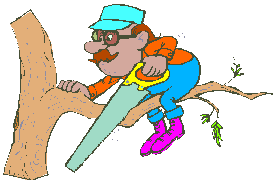The Scientific Method Of
Problem Solving

The Basic Steps:
-
State the Problem - A
problem can't be solved if it isn't understood.
-
Form a Hypothesis - This
is a possible solution to the problem formed after gathering information
about the problem. The term "research" is properly applied here.
-
Test the Hypothesis - An
experiment is performed to determine if the hypothesis solves the problem
or not. Experiments are done to gather data. It is very important that
good observations and records are made during an experiment.
-
Collect the Data - This
is where you record your observations, measurements, or information from
experiment.
-
Analyze the Data - Just
what does all that data indicate about answering the problem you are solving?
-
Draw Conclusions - After
examining the data from the experiment, conclusions can be drawn. In it's
simplest form, the conclusion will be "yes" the hypothesis was correct,
or "no" the hypothesis was not correct.
If the hypothesis is proven to be incorrect, you must
find out what was wrong with it. This might lead to the formation of a
hypothesis about the hypothesis!
Scientific Theory - A
logical explanation of observed events.
Scientific Law - A
theory that has been tested and widely accepted as true.
Controlled Experiment:
-
Variable - The factor being tested in an experiment.
-
Control - A part of the experiment without the variable.
This part of the experiment is used as a comparison.
-
Data - Observations from the experiment.
Research Links:



